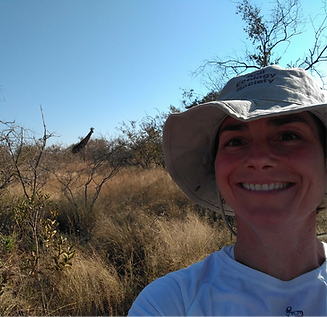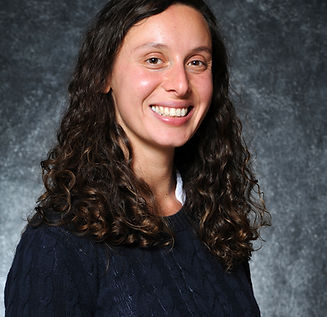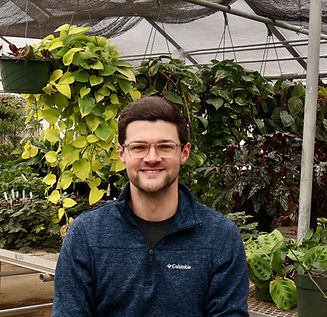
Get to Know Us
The objectives of our society are:
-
To stimulate and support studies in all phases of ecology, management and protection, and related intrinsic values of below ground systems.
-
To provide a clearinghouse of information among all agencies, organizations, and individuals engaged in work on belowground systems through appointment of work committees, preparation of bibliographies and abstracts, and related methods.
-
To function in an advisory capacity on questions involving management, conservation, and protection of belowground systems, and to adopt such measures as shall tend to ensure the continued survival and maintenance of healthy below-ground systems.


-
To establish scientific programs whereby the public is made aware of the importance of proper management and protection of below-ground systems.
-
To publish scientific symposium proceedings and transactions of meetings to present current information on problems relating to the preservation of below-ground systems and to commend outstanding action by the public and professionally engaged individuals supporting the purposes of the Society.
Board Members

Jennifer Adams Krumins
President
Dr. Jennifer Adams Krumins has been an active member of SES since 2007 when she presented her dissertation research at her first Soil Ecology Society Meeting in Moab. Since then, she has presented her research or advised student presentations at six of the last eight SES meetings. In 2015, she formally joined the Executive Board, and she has served as an At Large Member and Secretary. She is a professor at Montclair State University and the Science Director of the Pinelands Research Institute. Her research is built on international collaboration and funded by the National Science Foundation. As President, Dr. Krumins would like to update and increase connectivity within the society, and she looks forward to planning an exciting 2026 meeting. There she will prioritize strong student participation, and she will actively support a program to increase diversity and inclusivity of the SES.

Emma Aronson
Treasurer
In her research, Dr. Aronson, has focused on a range of topics, all within the range of environmental microbiology. Dr. Aronson has performed research in a wide range of ecosystems, ranging from coastal mangrove forest peat to desert shrub-associated soil microbiomes, to the plant-associated microbiome of soils recovering from the volcanic eruption at Mt. Saint Helens in 1985. Currently, Dr. Aronson is the Lead PI of the US NSF Critical Zone Network Cluster focused on geomicrobiology and biogeochemistry. Finally, Dr. Aronson is the Director of the Microbiology Graduate Program at the University of California, Riverside.
%20(3)(1).jpg)
Krisztina Mosdossy
Communications Officer
Krisztina asks questions about agriculture that connect people to soil ecology. She sees carbon and nutrient cycling through the ecology between nematodes, fungi, bacteria, and (micro)arthropods. Her current research at Cornell University reconnects nutrient cycles between humans and agriculture by using urine as a fertilizer, thus empowering people to be a part of the solution to reducing agriculture's reliance on synthetic fertilizers and reducing global pollution. She completed her Ph.D. at McGill University and will be starting a faculty position teaching Regenerative Agriculture at The Evergreen State College in winter 2026.

Hayden Bock
Member at Large
I am an ecologist working at the crossroads of soil and urban ecology, fascinated by how human activity and management re-shape belowground life in built landscapes. My research focuses on the connections between plants, soil fauna, and microbes in urban environments, and how we might leverage these hidden interactions to improve ecosystem health, resilience, and sustainability in our everyday lives.

Lisa Tieman
Past President
This is a paragraph. It is meant to serve as a placeholder for text that will be added later. It is commonly used in design and development to fill in space and give an idea of how the final content will look. This paragraph can be replaced with meaningful text once the actual content is available. In the meantime, it helps to visualize the layout and structure of a document or webpage. So, this is a paragraph that is here just for demonstration purposes.

Steven McBride
Secretary
This is a paragraph. It is meant to serve as a placeholder for text that will be added later. It is commonly used in design and development to fill in space and give an idea of how the final content will look. This paragraph can be replaced with meaningful text once the actual content is available. In the meantime, it helps to visualize the layout and structure of a document or webpage. So, this is a paragraph that is here just for demonstration purposes.

Jane Lucas
Member at Large
Dr. Jane Lucas has been an active member of the Soil Ecology Society (SES) since her postdoctoral years, when she attended the Toledo meeting and found it to be one of the most inspiring and welcoming conferences in her field. She began her career in soil ecology as an undergraduate studying the role of ants in tropical soil systems and later shifted her graduate work to examine the influence of livestock management on temperate agricultural soils—motivated by a long-standing interest in how soil communities contribute to sustainable food systems and human health. As a current SES board member, Dr. Lucas is committed to increasing participation among early-career scientists, expanding the society’s engagement with international research—particularly in understudied tropical systems—and finding new ways to keep the SES community connected between biannual meetings.

Claire Winfrey
Student Representative
Claire is a PhD candidate in the Fierer and Resasco Labs at the University of Colorado Boulder. She researches the spatial patterns of microorganisms in the soil and near-surface atmosphere, considering physiological traits and environmental conditions including habitat fragmentation to understand why microbes are where they are. Other than her research, she enjoys exploring Colorado’s mountains every way she can, gardening, crafting, and reading nerdy books.

Stephanie Kivlin
President-Elect
The Kivlin Lab researches the macroecology and ecosystem ecology of mycorrhizal fungi under global change. Website: https://kivlinlab.github.io/

Ben Sikes
Communications Officer
Ben Sikes is a senior scientist at the Kansas Biological Survey and Center for Ecological Research and professor of microbial ecology at the University of Kansas. His lab's research focuses largely on the community ecology of soil fungi, including those that help build soil and others that live on plants. He does this in the context of sustainable agriculture, restoration, fires, and more recently growing plants in space. He's originally from East Tennessee, and after travels with his family over a decade, landed in Lawrence in 2013. He likes Coke slushies in the summertime.

Cynthia Kallenbach
Member at Large
Cynthia Kallenbach is an Associate Professor at University of British Columbia, Vancouver (as of 2026) and has been a SES member since 2012. The Kallenbach lab studies how soil organic matter and nutrients are affected by land use and climate
changes and how soil microbial communities moderate this.
